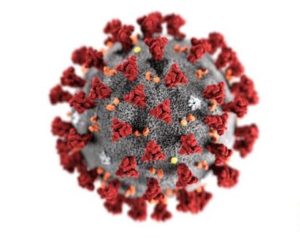ASHEVILLE, NC – March 30, 2022 – The decreasing number of COVID-19 infections, hospitalizations, and deaths in the United States has reduced the need for mask and vaccine mandates. However, case numbers are rising in Western Europe from a more transmissible variant of Omicron, called BA.2. A public health tool called wastewater surveillance can provide an early warning, between 3 to 7 days, before individual testing can show that COVID-19 is spreading in a particular community. Wastewater surveillance systems have been previously used to track the spread of other infectious pathogens in a community, like polio in the United States.
The CDC has partnered with local health departments to develop a system to track SARS-CoV-2 levels, the virus that causes COVID-19, in untreated wastewater samples from communities across the country. About 40 to 80 percent of people with COVID infection shed the genetic material from the virus in their feces which is transported in wastewater to treatment stations. The amount of viral load in the wastewater is related to the prevalence of COVID in a community. Changes in the viral load can be used to determine whether community infections are increasing or decreasing. Wastewater surveillance is valuable because most households (almost 80%) are served by municipal wastewater collection systems. However, homes on a septic system (common in rural communities) are not in the surveillance. Therefore, wastewater surveillance may not be accurate in North Carolina where forty to fifty percent of households are connected to septic systems.
The North Carolina Department of Health & Human Services submits the wastewater data from select wastewater treatment plants to the CDC where it is analyzed and sent back to the state. From the state website, the 15-day rate of change of viral load for the Metropolitan Sewer District for Buncombe County is falling at a range of -99% to -10% for the time period of March 2 to March 16th. This is consistent with the community’s decreased case rate one-week later. The CDC website reports that the 15-day rate of change of viral load has dramatically risen at a range of 100% to 999% during the time period one week later ending on March 20. As reported in North Carolina Health News, Amy Kirby, the leader of the CDC’s surveillance system, commented that wastewater surveillance “data are uniquely powerful because they capture the presence of infections from people with and without symptoms.”
Wastewater surveillance can advise communities to adopt preventive public health measures before case rates rise in order to slow COVID-19 spread and to increase the medical system capacitance necessary to withstand a future surge of cases.
Listen to the full report below:
Contact: Dick Needleman, Health reporter, 103.3 AshevilleFM, [email protected]
More Posts for Show: Asheville FM News Hour
